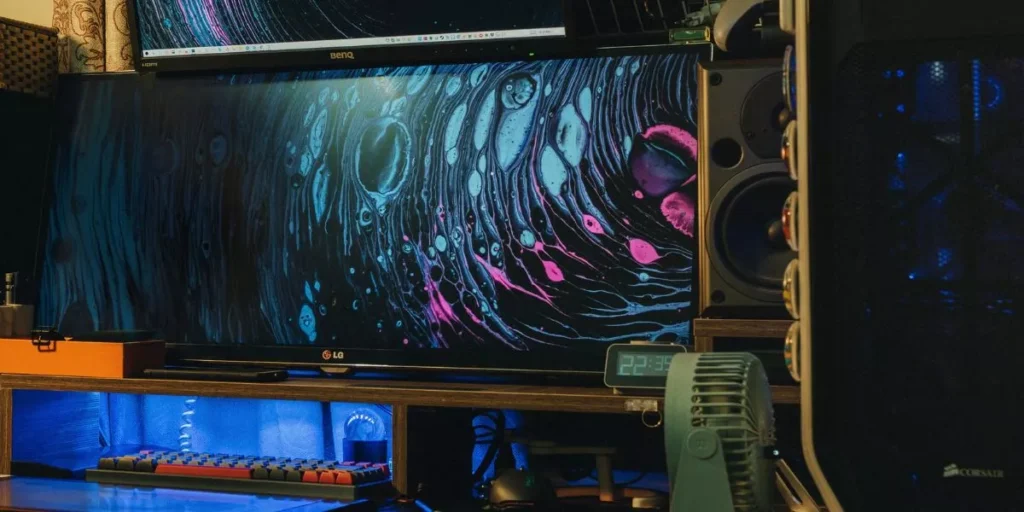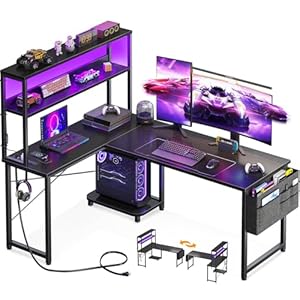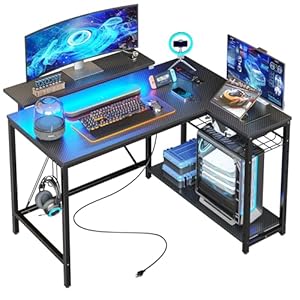
If you’re on the quest for the ultimate gaming setup, navigating the world of ultrawide monitors can be overwhelming. With a myriad of options boasting cutting-edge technology and impressive specs, it’s essential to pinpoint which features align best with your gaming preferences. From high resolutions to lightning-fast refresh rates, each monitor brings something unique to the table. So, before you make your decision, ensure you know exactly what to look for in the best ultrawide gaming monitor to elevate your gaming experience to new heights.
Top 5 Ultrawide Gaming Monitors
When selecting the best ultrawide gaming monitor, consider these top 5 options for an immersive gaming experience.
The first contender is the ASUS ROG Swift PG35VQ, boasting a 35-inch curved display with a 3440×1440 resolution and a buttery smooth 200Hz refresh rate.
Next up is the Acer Predator X34, a 34-inch monitor with NVIDIA G-Sync technology for tear-free gaming and a refresh rate of up to 120Hz.
The LG 34GN850-B also makes the list with a 34-inch Nano IPS display, 3440×1440 resolution, and a fast 144Hz refresh rate.
Moving on, the Samsung Odyssey G9 catches the eye with its massive 49-inch screen, 5120×1440 resolution, and a rapid 240Hz refresh rate.
Last but not least, the AOC Agon AG352UCG6 impresses with its 35-inch curved display, 3440×1440 resolution, and NVIDIA G-Sync support for seamless gameplay.
These top 5 ultrawide gaming monitors are sure to elevate your gaming experience to new heights.
Key Features to Consider
Consider key features like display resolution, refresh rate, and connectivity options when choosing the best ultrawide gaming monitor for your setup. Display resolution is crucial for crisp visuals. Opt for a monitor with a high resolution such as 3440×1440 or even 5120×1440 for a truly immersive gaming experience. A higher resolution allows for more detail and clarity in games.
Next, the refresh rate plays a significant role in gaming smoothness. A higher refresh rate, like 144Hz or 240Hz, ensures that motion appears fluid and reduces motion blur, giving you a competitive edge in fast-paced games.
Connectivity options are vital for seamless integration with your gaming setup. Look for monitors with multiple HDMI and DisplayPort inputs, as well as USB ports for peripherals. This versatility allows you to connect various devices simultaneously without the need for constant cable swapping.
Comparison of Refresh Rates
To understand the significance of refresh rates in ultrawide gaming monitors, let’s delve into their impact on your gaming experience. Refresh rates refer to the number of times per second a monitor updates the image on the screen. The higher the refresh rate, the smoother the motion appears, reducing motion blur and providing a more fluid gaming experience.
When comparing refresh rates, you’ll typically encounter 60Hz, 120Hz, 144Hz, or even 240Hz monitors. A higher refresh rate allows for quicker screen updates, resulting in reduced input lag and smoother visuals, especially in fast-paced games. The difference between 60Hz and 144Hz, for instance, can be quite noticeable in terms of overall responsiveness and visual clarity.
For competitive gaming, a higher refresh rate monitor can give you an edge over opponents by providing more accurate and up-to-date visuals. However, it’s essential to ensure your graphics card can support the higher refresh rate for optimal performance. Ultimately, choosing the right refresh rate depends on your gaming preferences and the types of games you play.
Pros and Cons of Each Model
In assessing the various models of ultrawide gaming monitors, it’s essential to weigh the pros and cons of each to make an informed decision.
The Alienware AW3420DW offers stunning visuals with its WQHD resolution, vibrant colors, and G-Sync compatibility, perfect for an immersive gaming experience. However, its high price may deter budget-conscious gamers.
On the other hand, the LG 34GN850-B provides excellent value with its Nano IPS panel, high refresh rate, and wide color gamut, ideal for both gaming and content creation. Yet, some users may find its HDR performance lacking compared to pricier models.
The Samsung Odyssey G9 stands out with its impressive 240Hz refresh rate, deep blacks, and immersive 1000R curve, but its steep cost and the potential for compatibility issues may give pause to some buyers.
Ultimately, your choice should align with your priorities, whether it be performance, value, or specific features.
Gaming














